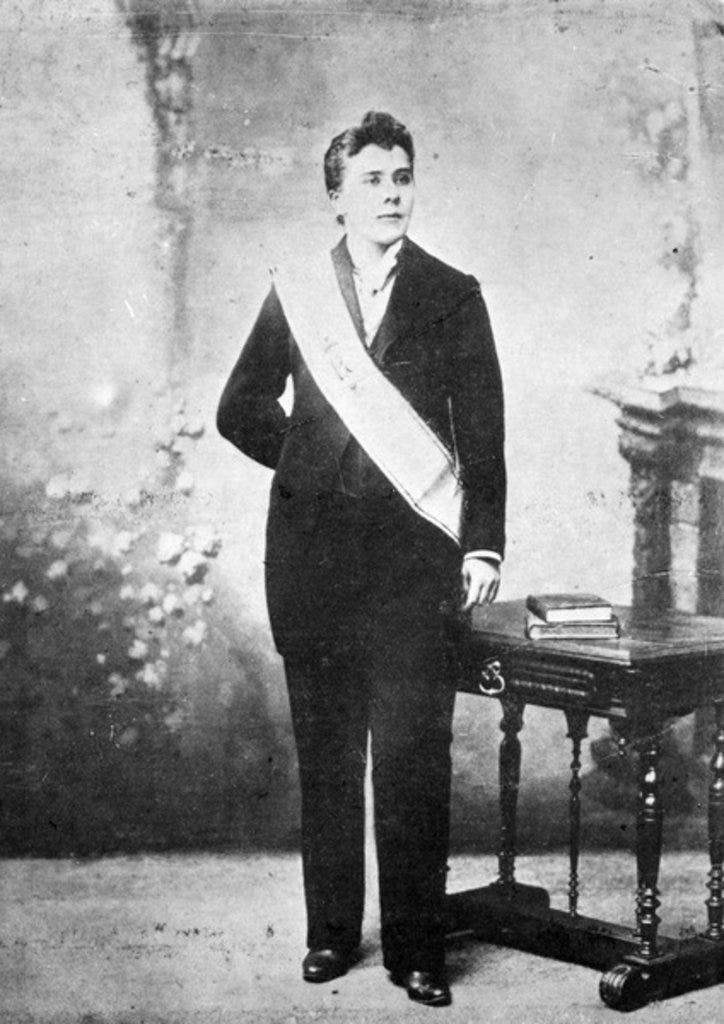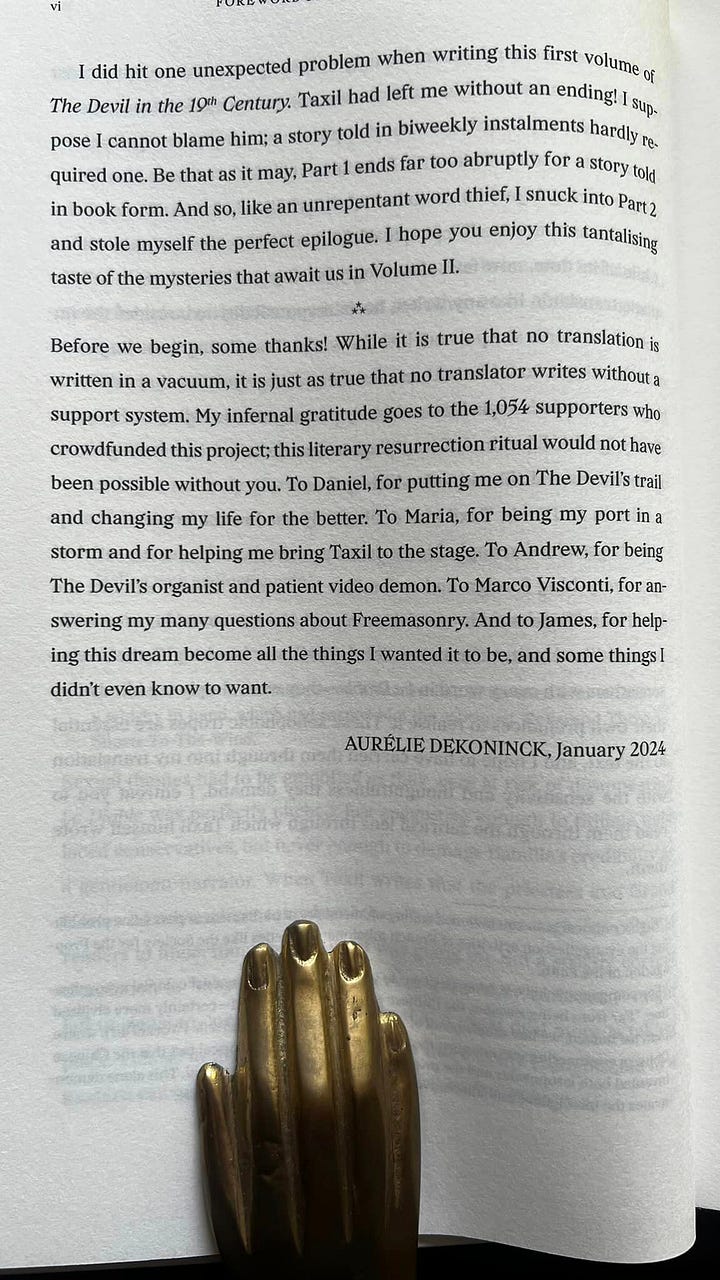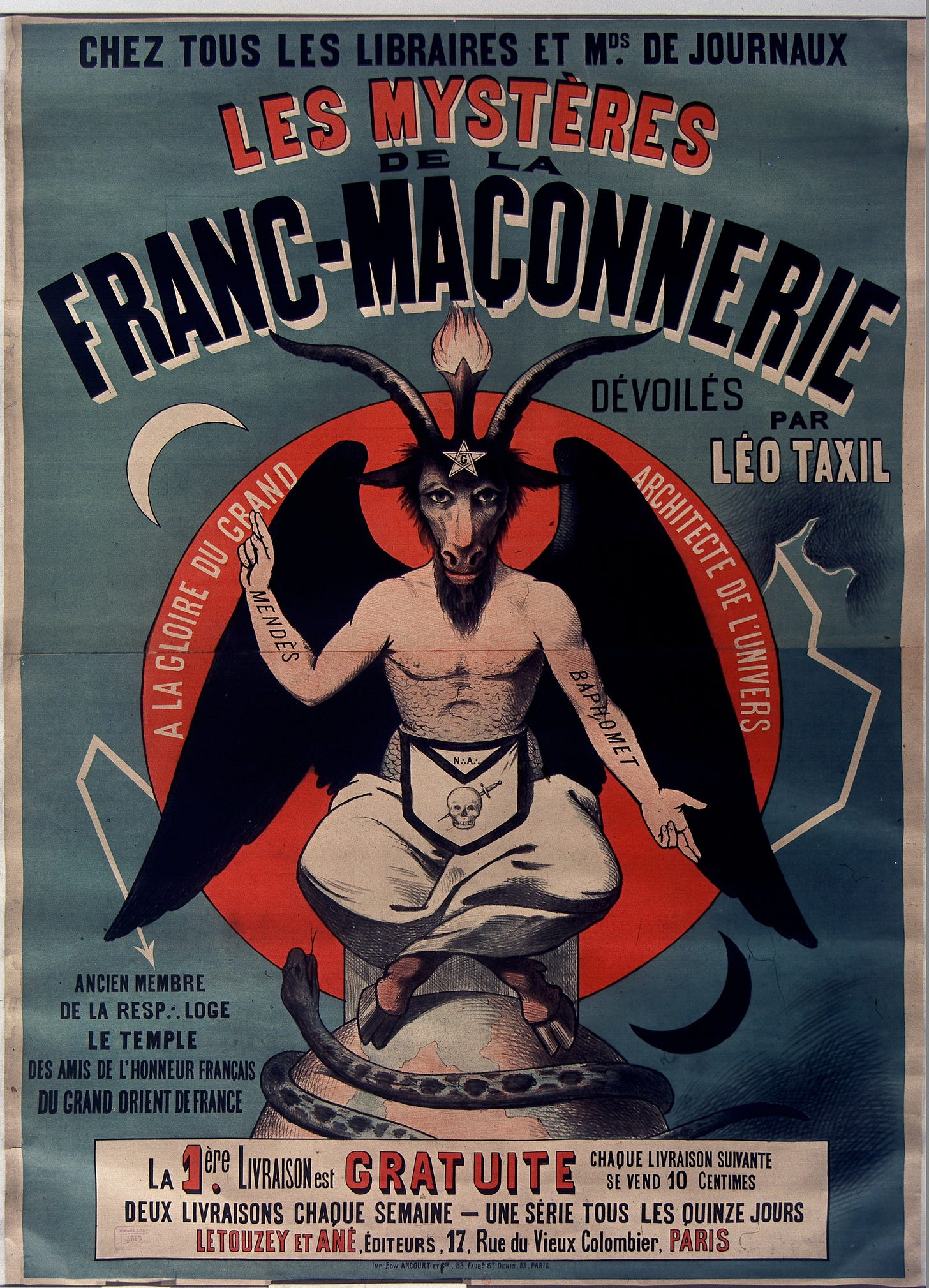REVIEW: THE DEVIL IN THE 19th CENTURY, VOL. 1
Aurélie Dekoninck First English Translation Reveals the Enduring Allure and Impact of Conspiracy Narratives
In the annals of literary hoaxes, few can rival the elaborate and sensational nature of Leo Taxil's The Devil in the 19th Century. This work played a pivotal role in one of the most infamous hoaxes of all time, the Taxil Hoax, which deceived and scandalised the Catholic Church and much of European society.
For years, this intriguing and controversial text was accessible only to those proficient in French. However, thanks to the dedicated efforts of Aurélie Dekoninck and a successful Kickstarter campaign, English-speaking audiences can now explore the depths of this peculiar and fascinating book.
The Taxil Hoax: A Brief Overview
To appreciate the significance of this translation, it is crucial to understand the context of the Taxil Hoax. Leo Taxil, a French writer and notorious prankster, orchestrated an elaborate deception beginning in 1885. Claiming to have converted from atheism to Catholicism, Taxil published a series of works purporting to expose the secrets and nefarious activities of Freemasonry. These works detailed bizarre rituals, Satanic worship, and the existence of a shadowy organisation known as the "Palladists."
The Devil in the 19th Century is the magnum opus of Taxil's hoax. It is a sprawling narrative combining fiction, conspiracy theory, and sensationalism. Taxil introduced characters such as the evil sorceress Diana Vaughan, who claimed to have been a high-ranking member of the Palladists before converting to Catholicism. The hoax culminated in an elaborate public confession in 1897, where Taxil admitted to fabricating the entire story, much to the embarrassment of the Catholic Church and his followers, and Dekoninck added the translation of the full speech in the appendix of the present edition. It makes for quite a stunning read.
The Translation: A Labour of Love
Dekoninck's translation is significant not only for making this work accessible to a broader audience but also for highlighting the enduring relevance of Taxil's hoax in contemporary discussions about conspiracy theories. In an age where misinformation and sensationalism can spread rapidly through digital media, The Devil in the 19th Century serves as a historical reminder of the power of narrative and the ease with which the public can be deceived.
Dekoninck brilliantly highlights these ideas both in the foreword and in the little essay introducing Taxil's biography. She shows us how he wasn't just an unscrupulous grifter—though he admitted that he continued the hoax because "there was a lot of money to make in doing so"—but also a true rebel who mostly acted in defiance of the ultra-reactionary and abusive culture of his time.
The Kickstarter campaign's success underscores the continued interest in understanding the mechanisms of conspiracy theories and the historical precedents for today's misinformation. The translation allows readers to reflect on the nature of belief, scepticism, and the societal impact of elaborate deceptions.
While the campaign is now over, you can still check out its page here, which is full of images, audio samples, and work-in-progress photos and videos that showcase all the passion that went into this project.
A Journey into the Absurd
Reading The Devil in the 19th Century is akin to stepping into a surreal and absurd world. Taxil's narrative is filled with lurid details, wild accusations, and outlandish characters. The text purports to reveal the inner workings of the Palladists, a secret society dedicated to Satanic worship and world domination. Taxil spares no effort in crafting a narrative that is both thrilling and horrifying, complete with descriptions of occult rituals, demonic apparitions, and sinister plots.
One of the most intriguing aspects of the book is the character of Diana Vaughan. Taxil portrays her as a repentant sorceress who reveals the dark secrets of the Palladists. Her supposed conversion to Catholicism and subsequent exposé of the Palladists provided the Catholic Church with what seemed like an insider's view into the world of Freemasonry and Satanism. Vaughan's character is a fascinating study of the construction of myth and narrative manipulation for sensational effect.

Dekoninck's translation is significant not only for making this work accessible to a broader audience but also for highlighting the enduring relevance of Taxil's hoax in contemporary discussions about conspiracy theories. In an age where misinformation and sensationalism can spread rapidly through digital media, The Devil in the 19th Century serves as a historical reminder of the power of narrative and the ease with which the public can be deceived.
The Kickstarter campaign's success underscores the continued interest in understanding the mechanisms of conspiracy theories and the historical precedents for today's misinformation. The translation allows readers to reflect on the nature of belief, scepticism, and the societal impact of elaborate deceptions.
Doing The Devil's Work
This edition is undoubtedly a remarkable achievement that brings Leo Taxil's infamous hoax to a new audience. The translation captures the sensational and absurd nature of the original work, offering readers a glimpse into one of the most elaborate literary deceptions of the 19th century.
As our contemporary society grapples with its own issues of misinformation and conspiracy theories, this translation provides valuable historical context and serves as a reminder of the enduring power of narrative to shape beliefs and influence society.


While the Kickstarter has ended, pre-orders are now open and will be fulfilled as soon as backer copies are shipped. You can order yours here







